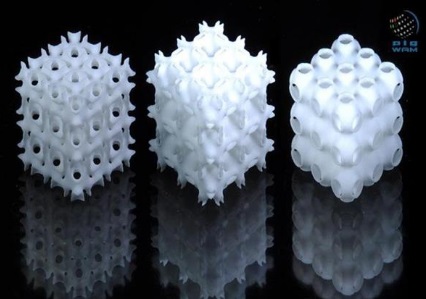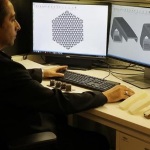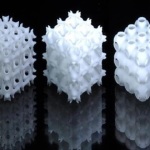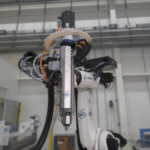Researchers from the Masdar Institute of Science and Technology have leveraged the unique capabilities of additive manufacturing, or 3-dimensional (3D) printing, to design strong, ultra-lightweight “architectured foam” structures that have the potential to make vehicle bodies much lighter and stronger, and improve water production and oil and gas operations.
The novel foams can be 3D printed with various materials including plastics, metals, ceramics, and composite materials, to enhance the thermal, electrical and mechanical properties of various engineering systems, including aerospace and automotive structural components.
They can be used anywhere there is a need for very strong, lightweight and conductive materials, such as in the aerospace and defence industries, or they can be used in applications that require highly conductive or porous materials, such as the energy, water and medical industries.
“The foam structures have the potential to become a platform technology, driving innovations across key industries and markets,” said Masdar Institute’s Dr Steve Griffiths, Vice President for Research. “This project demonstrates how Masdar Institute’s strong advanced materials research capabilities support disruptive technology-based innovations in the Institute’s core research areas of water and energy while benefiting other sectors of importance to the UAE.”
Masdar Institute’s Dr Rashid Abu Al-Rub, Associate Professor of Mechanical and Materials Engineering, is leading the collaborative research through the development of a computer model that can design thousands of different architectured foams. The research has been featured in over five peer-reviewed journals, including Composites Science and Technology.
“The key to the foams’ strength and light weight is in their internal geometry or what we refer to as internal architecture,” Dr Abu Al-Rub explained.
Similar to how the Eiffel Tower achieves its strength through a lattice of steel beams and struts balanced against open air, Dr Abu Al-Rub’s cellular materials, which are more than 90 per cent air, achieve their strength through the airy, geometric arrangements of their internal structure.
“We are not creating new materials. Rather, we are re-architecting a given material, such as steel or plastic, by manipulating its internal geometry so that we can deliver the desired properties, whether stiffness, electrical conductivity, or porosity, to the material,” he added.
The model can generate thousands of foam structures, allowing the researchers to select the desired properties of the foam, such as enhanced thermal and electrical properties, light weight and stiffness. Once designed in the model, the foams are then fabricated with a 3D printer.
The foams can be used as a three-dimensional continuous reinforcement, enhancing the properties of other solid materials, or they can be used independently as standalone foams.
The researchers are engaging with several companies to secure the proof-of-concept funding needed to accelerate the innovative foam’s commercialisation.
One of the properties that can be manipulated and tailored by the computer model is the porosity of a structure in order to control the flow distribution of a gas or liquid, which is an important aspect of oil and gas operations, seawater desalination processes, wastewater treatment systems and catalytic converters.
“The foam structures could be used to maximise gas flow, and increase the conversion efficiency of catalytic converters to reduce greenhouse gas emissions from car engines,” said Oraib Al-Ketan, a PhD student working with Dr Abu Al-Rub.
As the foams’ architectures are extremely complex, they pose a challenge to traditional manufacturing processes.














